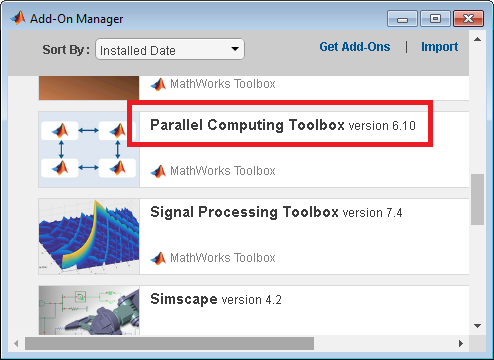
Installing Image Processing Toolbox In Matlab
How can I install Computer Vision System Toolbox? I have a trial version of the last Matlab. Image Processing Toolbox Version 8.3.
Getting Started (Image Processing Toolbox) Image Processing Toolbox Example 1 -- Some Basic Topics Before beginning with this exercise, start MATLAB. If you are new to MATLAB, you should first read the MATLAB Getting Started documentation.
You should already have installed the Image Processing Toolbox, which runs seamlessly from MATLAB. For information about installing the toolbox, see the MATLAB Installation Guide for your platform. All of the images used in this example are supplied with the Image Processing Toolbox. Pc game 2000. Note that the images shown in this documentation differ slightly from what you see on your screen because the surrounding MATLAB figure window has been removed to save space.
Read and Display an Image Clear the MATLAB workspace of any variables and close open figure windows. • clear, close all To read an image, use the imread command. Let's read in a TIFF image named pout.tif (which is one of the sample images that is supplied with the Image Processing Toolbox), and store it in an array named I.
• I=imread('pout.tif'); Now call imshow to display I. • imshow(I) Here's What Just Happened Step 1. The function recognized pout.tif as a valid TIFF file and stored it in the variable I. (For the list of graphics formats supported, see imread in the Image Processing Toolbox online 'Function Reference.'
) The functions imread and read and display graphics images in MATLAB. In general, it is preferable to use imshow for displaying images because it handles the image-related MATLAB properties for you.
(The MATLAB function image is for low-level programming tasks.) Note that if pout.tif were an indexed image, the appropriate syntax for imread would be, [X, map] = imread('pout.tif'); (For more information on the supported image types, see.) 2. Check the Image in Memory Enter the whos command to see how I is stored in memory. • whos MATLAB responds with • Name Size Bytes Class I 291x240 69840 uint8 array Grand total is 69840 elements using 69840 bytes Here's What Just Happened Step 2. You called the whos command to see how pout.tif had been stored into the MATLAB workspace. As you saw, pout.tif is stored as a 291-by-240 array. Since pout.tif was an 8-bit image, it gets stored in memory as an uint8 array. MATLAB can store images in memory as uint8, uint16, or double arrays.

(See for an explanation of when the different storage classes are used.) 3. Perform Histogram Equalization As you can see, pout.tif is a somewhat low contrast image. To see the distribution of intensities in pout.tif in its current state, you can create a histogram by calling the imhist function. (Precede the call to imhist with the figure command so that the histogram does not overwrite the display of the image I in the current figure window.) • figure, imhist(I)% Display a histogram of I in a new figure.
Notice how the intensity range is rather narrow. It does not cover the potential range of [0, 255], and is missing the high and low values that would result in good contrast. Now call histeq to spread the intensity values over the full range, thereby improving the contrast of I. Return the modified image in the variable I2.